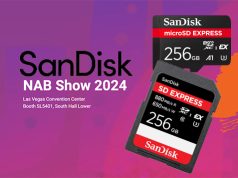In an issue where we are looking at the storage and organization of images, we thought we should hear from some of the industry’s media makers to get their take on this important topic. We sent out a query to some of the bigger names in digital media and those that responded appear below.
As an industry, digital photography can do more to educate shooters on how to properly care for their memory cards and ensures reliable and safe storage of images. In addition to memory card manufacturers like Lexar lauding the benefits of proper memory card care and how it impacts image storage and organization, photo channel retailers offer an effective conduit for educating photographers.
Photographers visit retailers not only to purchase new products, but also to get an expert’s opinion on their equipment and to mingle with like-minded professionals or hobbyists. By sharing some best practices for proper memory card care, retailers can become a trusted resource for photographers and foster customer loyalty simultaneously. Some tips to keep in mind to help photographers store and organize images include:
• Photographers should always format their memory cards in their parent cameras. This will ensure that the cards are configured to function the way that cameras require and minimize image corruption.
• Photographers should always use a card reader to download images from the card to the computer. Connecting a camera directly to a computer to download images can drain the camera’s battery and be extremely cumbersome, so retailers should recommend photographers use a card reader for the fastest and most efficient downloads possible. Also, be sure that recommended card readers match their cards’ technology. For instance, using a UDMA CompactFlash card with a non-UDMA-enabled card reader will not convey the speed benefits that UDMA technology offers.
• Photographers should take advantage of metadata. When applied correctly, metadata will embed critical information into an image file and can include copyright information or the date and location where the picture was taken. Trying to add all of this information during the editing process can be painfully slow and inefficient.
By sharing these recommendations with customers, retailers can establish themselves as go-to resources and build even better relationships with photographers. This will not only encourage repeat visits, but will also arm photographers with the practices that they need to better store, organize, and retrieve their precious images.
— Jeff Cable, Director of Marketing, Lexar
Memory is cheap, but memories are priceless. That is why it is so important for consumers to understand how to properly protect them for future generations to share and enjoy.
Flash memory is an ideal way to capture life’s milestones and store digital entertainment. However, it is not meant to be used to archive assets such as photos, music and videos. All-too-often we hear about customers who store content on memory cards for safe-keeping. While Kingston’s Flash memory cards come with a lifetime warranty, true data retention on all Flash memory products is about 10 years. This lifespan is based on inactive use of the card. Periodic use such as inserting the card into a reader or computer would extend the lifespan of the content stored on the card.
The reality is that content from memory cards should be transferred to a computer and then backed up and archived using larger, external storage devices – not once, but at least twice. Virtual storage is also a good option but should not be the only backup or storage medium used.
Protecting digital content begins prior to creation of content. For example, when it comes to card capacity, bigger is not necessarily better. Higher resolution cameras and camcorders typically require large-capacity Flash memory cards. However, smaller capacity cards should be used with small point-and-shoot cameras. Consumers tend to not empty a card of its contents until it is full. Based on the size of the memory card – and the resolution of the camera – it might take the average consumer more than a year to fill a card and possibly compromising the integrity of those images on the card, especially if the camera or card is lost or stolen.
Memory is cheap but memories are priceless.
— Mark Leathem, Director of Flash Marketing, Kingston Technology
Even as the photo industry searches for ways to encourage people to print their digital images, Delkin Devices focuses on the real and growing problem of organizing and storing those image files. No longer limited by the exposures on a roll of film, photographers now generate hundreds or even thousands of digital images on a shoot. How can you organize and file those images quickly? And then, how to store those files safely? Almost everyone has experienced a hard drive crash, or inexpensive CD-Rs corrupting files after just a year or so. Devices has solutions for both the image file organization and long-term storage issues. One such solution is our long-term storage/data protection Archival Gold CD-R and DVD-R media that assures complete protection when storing and archiving precious wedding photos and home movies. Rated with a lifespan of 300 years and 100 years respectively, we feel Archival Gold is the most reliable media in the world. This is due to a 24 karat gold reflective layer and a patented Phthalocyanine dye layer, which enables Archival Gold discs to resist environmental factors which corrode CD-R and DVD-R media over time. Archival Gold media will not crash like a hard drive and does not require a monthly fee like online backup. Archival Gold media packaging is PVC free for safe storage and protection. Long-term storage of photography’s ever-growing files is a moving target. Keeping pace with this issue, Delkin has also introduced its Archival Gold Blu-ray Discs.
—Duke Doudna, Delkin Devices, Inc.





